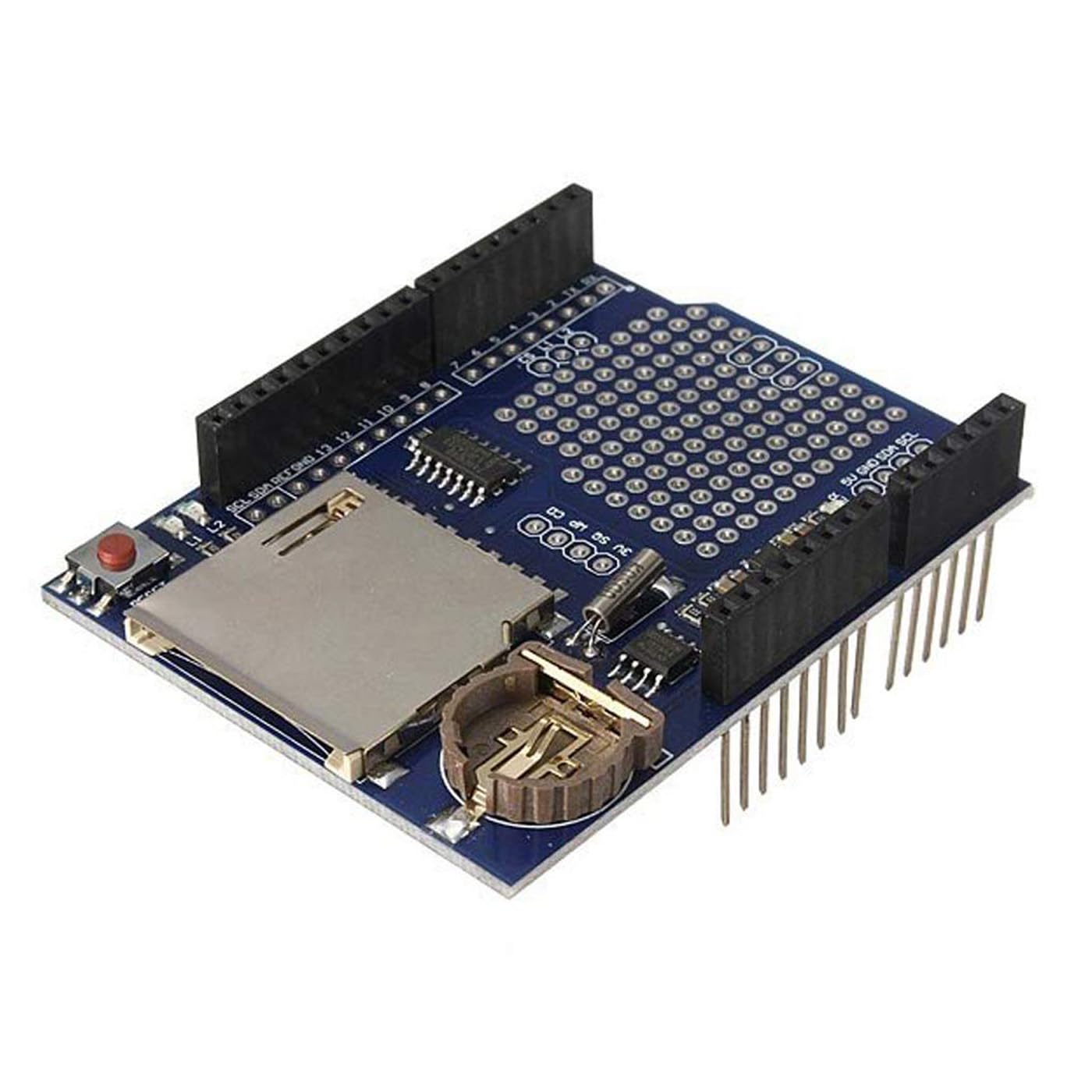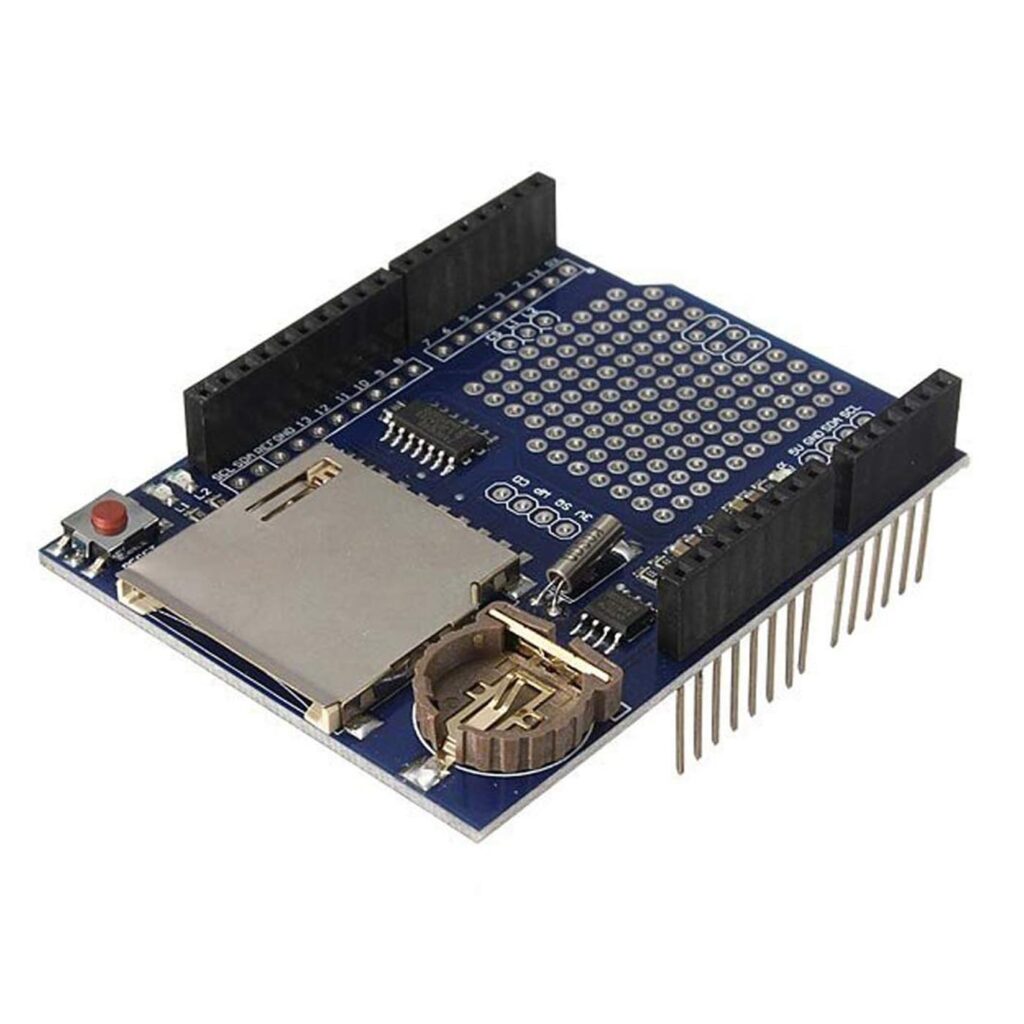Have you been searching for an efficient way to enhance your Arduino projects with reliable data logging capabilities? The Data Logging Shield XD-204 Data Logger Module Logging Shield Data Recorder Shield for Arduino UNO w/SD Card might just be the perfect solution you need. Let’s explore how this fantastic module can transform your prototyping efforts and make your data recording tasks a breeze.
Overview of Data Logging Shield XD-204
Compatibility with SD Cards
This shield supports SD cards that are formatted with either FAT16 or FAT32 file systems. Essentially, this means you can use most of your existing SD cards without any hassle.
Feature:: Works with FAT16 or FAT32 formatted cards.
- Using standard file systems ensures you won’t be stuck searching for rare or expensive storage options.
- Easy to integrate into your current projects with minimal configuration needed.
Protect Your SD Card
One of the standout features is the 3.3V level shifter circuitry, which serves to prevent any potential damage to your SD card.
Feature:: 3.3V level shifter circuitry prevents damage to your SD card.
- Keeps your valuable data safe.
- Enhances the longevity of your SD card.
Real Time Clock (RTC)
The onboard Real Time Clock (RTC) continues to keep accurate time even when your Arduino is unplugged. It’s a fantastic feature for projects requiring time stamps on data entries.
Feature:: Real-time clock (RTC) keeps the time going even when the Arduino is unplugged.
- Ensures time-stamped data is accurate.
- Useful for long-term data logging projects.
Ready-Made Libraries and Example Code
To make your life easier, included libraries and example code for both SD and RTC functionalities enable you to get started quickly without a steep learning curve.
Feature:: Included libraries and example code for both SD and RTC.
- Accelerates your project setup.
- Provides a tested and reliable starting point.
Prototyping Area
Lastly, a prototyping area is part of the module, allowing you to include additional circuitry, connectors, or sensors with ease.
Feature:: Prototyping area for soldering connectors, circuitry or sensors.
- Offers extensive customization possibilities.
- Convenient for integrating various sensors directly on the shield.
Breaking Down the Features
To make things easier, here’s a quick summary table to provide a clear and concise breakdown:
| Feature | Description |
|---|---|
| SD card compatibility | Works with both FAT16 and FAT32 formatted cards |
| 3.3V Level Shifter Circuitry | Prevents damage to SD cards |
| Real Time Clock (RTC) | Continues to keep time even when Arduino is unplugged |
| Included Libraries and Example Code | For both SD and RTC functionalities |
| Prototyping Area | Allows for easy inclusion of sensors and additional circuitry |
Connecting and Installing the Shield
Simple Installation Process
Attaching the shield to your Arduino board is straightforward. Simply align the pins and press them together until they are properly joined. Ensure the shield is tightly secured to avoid any loose connections that could potentially interrupt your data logging operations.
Installing the Libraries
The next step involves setting up the corresponding libraries. You’ll find these in the Arduino Library Manager. Search for “SD” and “RTClib,” and install both libraries. Including these libraries in your script is as simple as adding these lines:
include
include
This ensures you have all the necessary functions to interface with both the SD card and RTC directly from your Arduino sketch.
Connecting Sensors
The prototyping area is versatile, allowing you to easily add various sensors. Whether you’re looking to monitor temperature, humidity, or any other environmental factors, you can conveniently attach additional components using the provided soldering area.
Setting Up Your First Project
Initializing the SD Card
Before beginning your data logging, you’ll need to initialize your SD card. The sample code included with the SD library makes this step simple:
if (!SD.begin(chipSelect)) { Serial.println(“Initialization failed!”); return; } Serial.println(“Initialization done.”);
This piece of code checks if the SD card initialization is successful and promptly informs you of any issues.
Setting Up the RTC
Next, initialize the RTC and set the current time. The included RTClib makes it easy to handle date and time:
RTC_DS1307 rtc;
if (!rtc.begin()) { Serial.println(“Couldn’t find RTC”); while (1); }
if (!rtc.isrunning()) { Serial.println(“RTC is NOT running!”); // following line sets the RTC to the date & time this sketch was compiled rtc.adjust(DateTime(F(DATE), F(TIME))); }
This code will ensure your RTC is running and set to the correct time, making it ready for timestamping your data.
Coding Example for Data Logging
Basic Data Logging Script
Here’s a basic script that logs the temperature from a sensor to the SD card every minute with a timestamp:
include
include
include
include
include
define SEALEVELPRESSURE_HPA (1013.25)
RTC_DS1307 rtc; Adafruit_BME280 bme; // I2C
const int chipSelect = 10;
void setup() { Serial.begin(9600); if (!rtc.begin()) { Serial.println(“Couldn’t find RTC”); while (1); } if (!rtc.isrunning()) { Serial.println(“RTC is NOT running!”); rtc.adjust(DateTime(F(DATE), F(TIME))); }
if (!bme.begin(0x76)) { Serial.println(“Could not find a valid BME280 sensor, check wiring!”); while (1); }
if (!SD.begin(chipSelect)) { Serial.println(“SD card initialization failed!”); return; } }
void loop() { DateTime now = rtc.now();
float temp = bme.readTemperature();
File dataFile = SD.open(“datalog.txt”, FILE_WRITE);
if (dataFile) { dataFile.print(now.year(), DEC); dataFile.print(‘/’); dataFile.print(now.month(), DEC); dataFile.print(‘/’); dataFile.print(now.day(), DEC); dataFile.print(” “); dataFile.print(now.hour(), DEC); dataFile.print(‘:’); dataFile.print(now.minute(), DEC); dataFile.print(‘:’); dataFile.print(now.second(), DEC); dataFile.print(“, “); dataFile.print(temp); dataFile.println(” *C”); dataFile.close();
Serial.println("Data logged."); } else { Serial.println(“Error opening datalog.txt”); }
delay(60000); // log data every minute }
Explanation
This script captures the temperature and logs it along with a timestamp. The rtc.now() method returns the current time and date, while the readTemperature() method from the Adafruit BME280 library returns the sensor readings.
Advanced Use Cases
Multi-Sensor Integration
You’ve got the basics down, but what if your project requires more sensors? With the XD-204 shield, you can integrate multiple sensors easily. Here’s how you might extend your project to include more environmental parameters like humidity and pressure:
float humidity = bme.readHumidity(); float pressure = bme.readPressure() / 100.0F;
Add these to your loop and log them similarly as you did with temperature.
Adding GPS Data
Need GPS data in your logs? Integrate a GPS module and capture the latitude and longitude. Here’s a glimpse of what that might look like in your code:
include
TinyGPSPlus gps;
void setup() { // other initializations… Serial1.begin(9600); // Assuming GPS is connected to Serial1 }
void loop() { while (Serial1.available() > 0) { gps.encode(Serial1.read()); } if (gps.location.isUpdated()) { float latitude = gps.location.lat(); float longitude = gps.location.lng();
dataFile.print(", "); dataFile.print(latitude, 6); dataFile.print(", "); dataFile.print(longitude, 6); } }
Battery-Powered Portable Logger
Creating a portable data logger requires a few tweaks, including power-saving techniques and using a battery to power your Arduino and the shield. Using sleep modes can significantly extend battery life.
include
void loop() { // Logging code LowPower.powerDown(SLEEP_8S, ADC_OFF, BOD_OFF); }
Troubleshooting Common Issues
SD Card Initialization Failure
If your SD card fails to initialize, check:
- Card format – ensure it’s FAT16 or FAT32.
- Connections – make sure they are secure.
- Correct Chip Select pin – varies based on your setup.
RTC Not Keeping Time
If RTC fails to keep the time, possible culprits include:
- Battery: Ensure the backup battery is installed correctly.
- Connections to the Arduino are firm.
Data Corruption
Data corruption could result from:
- Improper power down: Always ensure you safely eject the SD card.
- Electrical noise: Ensure proper shielding and grounding of your project.
Sensor Calibration
For accurate readings, regular sensor calibration is essential. Refer to your sensor’s datasheet for calibration procedures and include this in your maintenance schedule.
Conclusion
With the Data Logging Shield XD-204, you get a robust, versatile, and easy-to-use module for your data logging needs. Whether you’re a hobbyist or working on a professional-grade project, this shield provides the necessary tools and features to collect, store, and manage your data efficiently. From simple single-sensor setups to complex multi-sensor projects incorporating GPS and other data streams, this shield is up for the challenge. Safe data storage through SD compatibility and level shifting, accurate time-keeping with the RTC, and ample prototyping space make it an invaluable tool in any Arduino enthusiast’s toolkit. So, get your hands on the XD-204, start logging your data seamlessly, and take your projects to new heights!
Disclosure: As an Amazon Associate, I earn from qualifying purchases.





